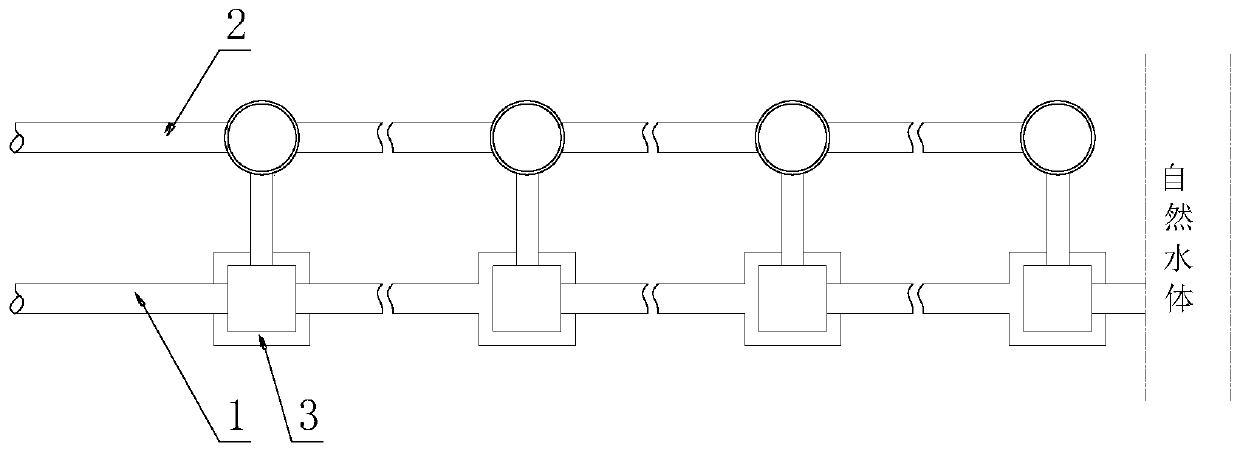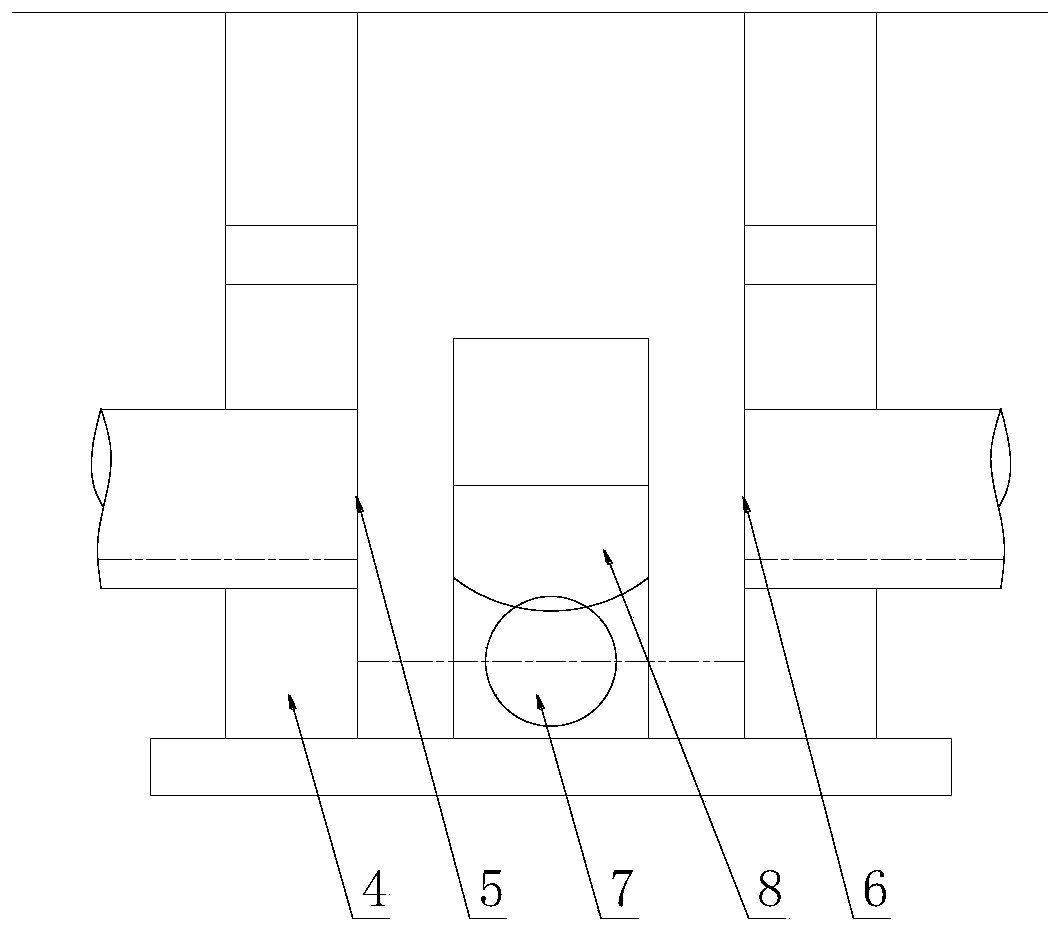Separate system controlling sewage and initial rainwater pollution
A technology of initial rainwater and diversion system, which is applied in waterway systems, sewer systems, water supply devices, etc., and can solve problems such as mixed connection of pipelines, inability to sewage, precise control of initial rainwater, and pollution of natural water bodies
- Summary
- Abstract
- Description
- Claims
- Application Information
AI Technical Summary
Problems solved by technology
Method used
Image
Examples
Embodiment 1
[0047] Such as Figure 1-4 As shown, a diversion system for controlling sewage and initial rainwater pollution includes a rainwater pipeline 1, a sewage pipeline 2 and a diversion control unit 3, the rainwater pipeline 1 is parallel to the sewage pipeline 2, and several diversion pipes are arranged on the rainwater pipeline 1 The control unit 3, the diversion control unit 3 is connected to the sewage pipeline 2 through the diversion pipeline;
[0048] The diversion control unit 3 includes a diversion well 4, one side of the diversion well 4 is provided with a first inlet 5, and the diversion well 4 on the other side corresponding to the first inlet 5 is provided with a first outlet 6, the first inlet 5 and the first outlet 6 respectively connect the rainwater pipelines 1 on both sides of the diversion well 4;
[0049] The side of the diversion well 4 close to the sewage pipeline 2 is provided with a second outlet 7, the second outlet 7 is connected to the inlet of the diversi...
Embodiment 2
[0059] Such as Figure 5 As shown, as a specific implementation manner, the access control unit 8 includes a dynamic power transmission mechanism 81, a lifting mechanism 82, an opening and closing mechanism 83 and a reset mechanism 84, and the dynamic power transmission mechanism 81 is connected to the opening and closing mechanism through the lifting mechanism 82 83, the opening and closing mechanism 83 is set on the second outlet 7 to control the opening of the second outlet 7; the reset mechanism 84 is connected to the lifting mechanism 82 to drive the opening and closing mechanism 83 to reset;
[0060] The dynamic power transmission mechanism 81 includes an impeller 811, an input shaft 812, a reversing transmission mechanism 813 and an output shaft 814;
[0061] The lifting mechanism 82 includes a gear 821 and a rack 822;
[0062] The opening and closing mechanism 83 includes a valve plate 831 and a sliding seat 832;
[0063] The reset mechanism 84 includes a tension spr...
Embodiment 3
[0072] Such as Figure 6-7 As shown, further, as an optimization of the second embodiment, the output shaft 814 is connected to the limit mechanism, and the limit mechanism includes a ratchet 851, a pawl 852, a spring 853, a slider 854, a slide rail 855, a connecting rod 856 and a floating ball 857, the ratchet 851 is fixed on the output shaft 814, the ratchet 851 cooperates with the pawl 852, the pawl 852 is connected to the slider 854 through the pin shaft, and a spring 853 is arranged between the bottom of the ratchet 852 and the slider 854, the slider 854 is slidingly connected with the slide rail 855 in the shunt well 4 , the bottom of the slide block 854 is fixedly connected to the upper end of the connecting rod 856 , and the lower end of the connecting rod 856 is fixedly connected to the floating ball 857 .
[0073] The floating ball 857 is affected by the liquid level in the shunt well 4. In sunny days, due to no liquid level or low liquid level, the floating ball 857...
PUM
 Login to View More
Login to View More Abstract
Description
Claims
Application Information
 Login to View More
Login to View More - R&D Engineer
- R&D Manager
- IP Professional
- Industry Leading Data Capabilities
- Powerful AI technology
- Patent DNA Extraction
Browse by: Latest US Patents, China's latest patents, Technical Efficacy Thesaurus, Application Domain, Technology Topic, Popular Technical Reports.
© 2024 PatSnap. All rights reserved.Legal|Privacy policy|Modern Slavery Act Transparency Statement|Sitemap|About US| Contact US: help@patsnap.com










